The Ocean Is Everything
Marine biologist Anya Astafurova takes us into the depths of our mysterious oceans.
👋 Hello to 3,108 climate buddies 🌳
Delphi Zero explores the interplay of climate, energy, and security 🌳🔋🛡️
📧 If you are opening this essay in your email inbox, I recommend clicking on the title of this piece to enjoy the full-length version in the browser.
My trip to Antarctica was truly life changing.
One of the key people who guided us travelers into the scale, the serenity, and the significance of this place was Anya Astafurova - a marine biologist - who is more similar to a badass character in a sci-fi novel than to your typical academic. Honestly, go follow her, learn through her experience, and say hi to her.
In this wide-ranging, in-depth conversation we discuss:
🌊 Why people should care about the oceans
🐳 How looking into the eye of a humpback whale makes you feel
🪸 What all of us should understand about the complex and mysterious ecosystem of our oceans
This is part 2 of an ongoing series about The White Continent:
My Antarctic Dispatch: What It Feels Like To Arrive In Antarctica
The Ocean Is Everything: Marine biologist Anya Astafurova takes us into the depths of our mysterious oceans.
Enjoy 🐋
The Ocean Is Everything
By Art Lapinsch
Why should people care about the ocean? What’s so special about it?
I’ll put it simply: Because the ocean is everything.
It’s the beating heart of our planet — regulating climate, producing over half the oxygen we breathe thanks to phytoplankton, and feeding millions of people every day. But it’s more than just science or survival.
For me, the ocean is where I’ve found purpose, awe, and belonging. I’ve looked into the eyes of a humpback whale, stood still as orcas slipped silently beneath ice, and watched a frozen silence stretch into forever in Antarctica.
The ocean humbles you. It reminds you how small you are — and how deeply connected everything is.
That’s why we must care for it — because when we protect the ocean, we’re protecting the future, not just of marine life, but of ourselves.
How did you develop your love for the oceans and marine biology? Take us through your journey of how you ended up where you are today.
It started from school and my goal was to see a polar bear in its natural habitat after watching one of the BBC documentaries.
And just like that, at 21, I saw a polar bear for the first time in the Arctic, and later, an orca pod cutting through the icy waters of Antarctica. It wasn’t just beautiful — it was life-altering. In their presence, I felt something shift. From that point on, I followed the pull — I studied, trained, and slowly stepped into this life.
Today, I work as a marine biologist, polar guide, and lecturer on expedition ships in the Arctic and Antarctica. It’s not always glamorous — there are long days, isolation, and harsh conditions — but it’s real, and it’s deeply meaningful. Being out there, surrounded by whales, seals, sea ice, and icebergs, I feel fully alive.
I’m not just observing nature — I’m part of it. And every encounter reminds me why I chose this path: to protect, to educate, and to be a voice for the wild, beautiful world.

What are the biggest unknowns about the ocean? Do you have any hypotheses to those unknowns? What would be the one question that you’d like to have answered? Why this particular question?
The ocean is the most mysterious part of our planet — I guess we’ve explored more of the moon than our own deep sea.
One of the biggest unknowns is the vast diversity that still exists in the deep, dark layers — the life forms, ecosystems, and even behaviors we haven’t yet discovered. Every time researchers go deeper, they find something that rewrites what we thought we knew.
If I could have one question answered, it would be this: What is the long-term impact of climate change on deep ocean ecosystems — especially those we’ve never even seen?
Because while we focus on surface-level changes — melting sea ice, rising temperatures — the deep ocean is absorbing most of the planet’s excess heat and carbon. It's like the ocean is quietly holding our mistakes, and we don't yet fully understand what it's costing.

The more I study — from shrinking krill populations in Antarctica to changes in predator behavior — the more I wonder what silent shifts are happening far below, where we can’t look.
That question keeps me awake, because the ocean is not just a habitat — it’s the heartbeat of Earth I’d say.
Who’s your academic crush? Why?
There are so many individuals who have influenced me throughout my academic journey, but a few stand out.
My mentor and whale guru Mark Carwardine — without hesitation. He’s not just a brilliant zoologist, conservationist, and author, but someone who’s managed to communicate the wonder and fragility of the natural world with such clarity and passion.
His work with whales, in particular, struck a deep chord with me — he sees them not just as species to study, but as individuals with histories, emotions, and importance beyond what we can measure.
His ability to merge science with storytelling — to make people care — is something I deeply admire. He reminds me that data is powerful, but it’s empathy that moves people to protect what’s still wild. That’s the kind of impact I hope to have, too.

Roger Payne, for instance, is a huge inspiration to me—his discovery of the humpback whale's song fundamentally changed how we understand whale communication and the emotional depth of these creatures.

Michael Bigg’s development of photo identification techniques for whales is another major influence. His work revolutionized the study of whale populations and individual whale behavior, making it possible to track and protect these majestic animals in a way that had never been done before.

Then, there’s Sylvia Earle, a renowned oceanographer and one of the most well-known female figures in marine science. Her work has brought global attention to the importance of ocean conservation, and she continues to inspire generations of marine biologists, including myself, to dedicate ourselves to protecting our oceans.
Finally, I’d like to mention Alison Cusick, oceanographer, marine biologist focusing on phytoplankron study in the Southern Ocean and polar guide. She has navigated both academic and personal challenges to become a powerful voice in polar science, and her story of perseverance resonates deeply with me. It’s a reminder that passion for science can drive you to overcome any obstacle.
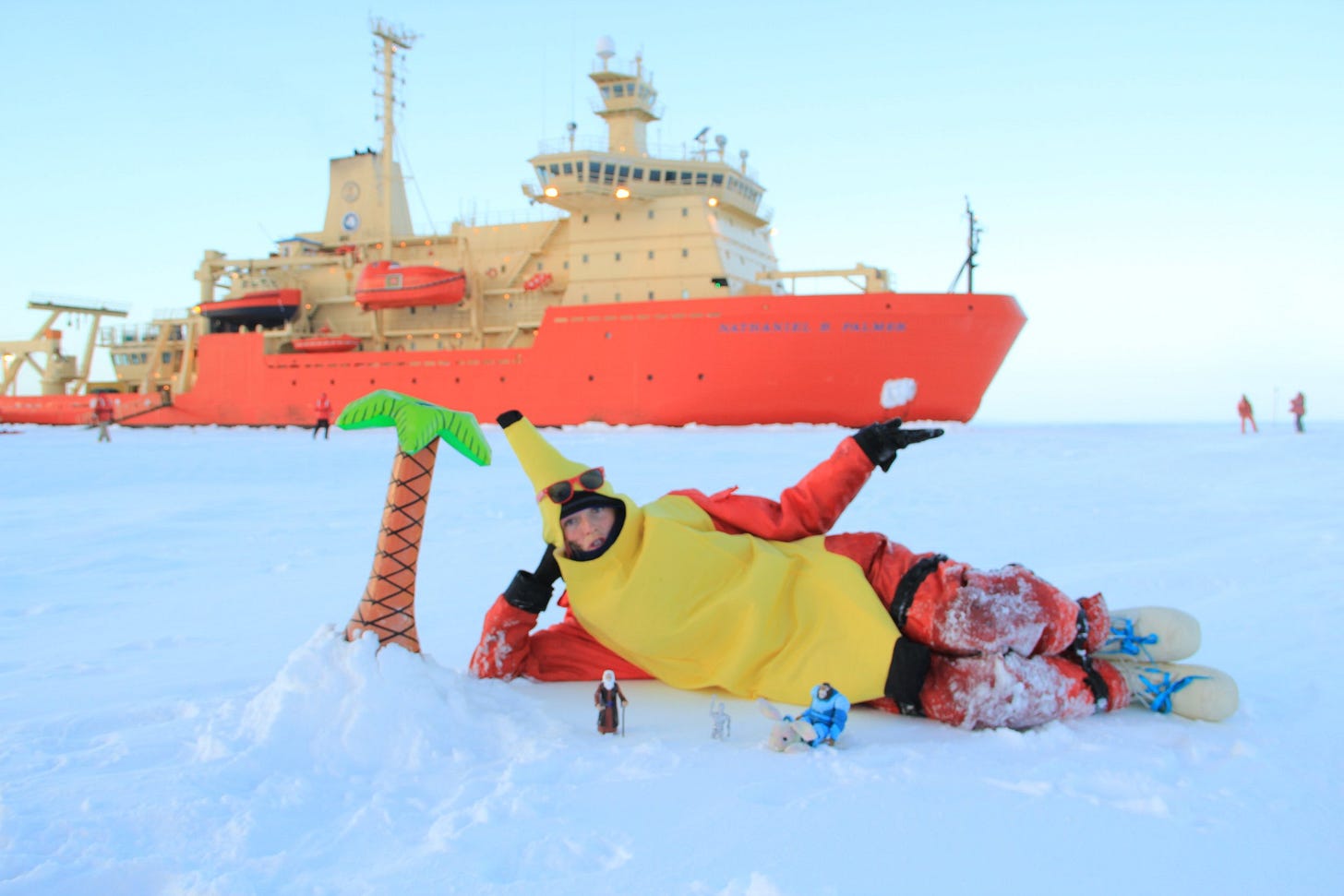
Why have people been fascinated by the ocean and its creatures throughout history (mythology, adoration, etc.)? Do you have any theories?
Absolutely—I think people have been fascinated by the ocean and its creatures throughout history for a few deep, interconnected reasons.
First, the ocean is vast and mysterious. For most of human history, it represented the unknown—an endless expanse that held both danger and discovery. That sense of mystery naturally inspires awe, fear, and imagination, which is why so many cultures wove it into their mythology—Poseidon, sea serpents, mermaids, and sea gods are just a few examples of how the ocean became a symbol of power, unpredictability, and transformation.

Second, the ocean has always been vital to human survival. It's provided food, trade routes, and even climate stability, so there's been a kind of reverent dependence on it. That can evolve into admiration or even spiritual connection, especially in coastal cultures.
Lastly, I think there's something deeply emotional about watching ocean life—whales breaching, bioluminescent waves, coral reefs teeming with color. These sights feel both alien and profoundly alive, almost like a reminder of how small we are in the grand design of nature.
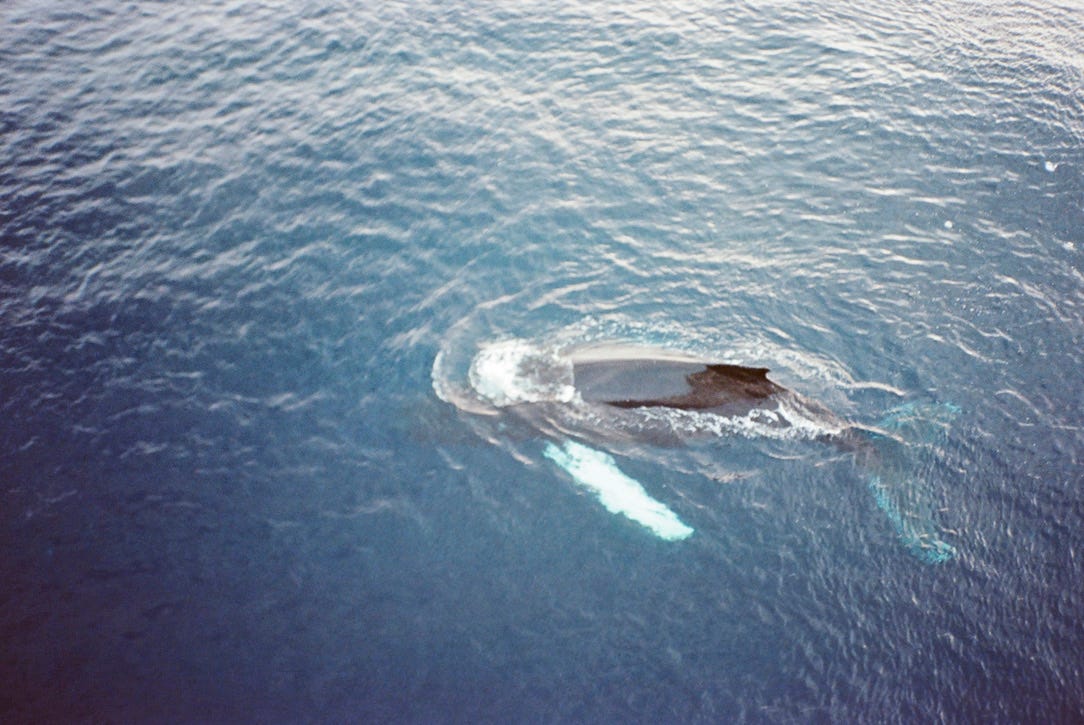
My theory is that the ocean taps into both our curiosity and our sense of wonder. It mirrors the depths of the human psyche—beautiful, mysterious, sometimes terrifying, and full of things we have yet to understand.
Let’s talk about creatures. Your research focus are cetaceans (i.e. whales). What would you like more people to know about whales? Why?
As a marine biologist studying whales, I’d love for more people to know that whales are not just giant animals swimming through the ocean—they are intelligent, socially complex, emotionally aware beings with rich cultures of their own.
Some species of whales, such as orcas and sperm whales, have dialects, some baleen whale produce complex vocalizations we refer as songs, and whales have behaviors that are passed down through generations, much like human traditions. For instance, humpback whales sing intricate songs that change over time and are shared across vast ocean basins.
Orcas live in tight-knit family pods and families and have unique vocalizations and hunting techniques specific to their group—some even pass these strategies on like cultural knowledge.
I’d also want people to understand how deeply connected whales are to ocean health and, in turn, to our own. Whales play a vital role in the marine ecosystem—when they dive and feed, they circulate nutrients, helping to support the entire food chain and even contributing to carbon cycling that affects the climate.
Through a process called the “whale pump,” whales’ iron-rich feces fertilize phytoplankton, which form the base of the marine food web and absorb massive amounts of CO2 while releasing oxygen through photosynthesis just like plants do.
Phytoplankton release more than 50% of oxygen into the atmosphere... oxygen we all breathe. Put it simply, more whales - more poop and food for phytoplankton - more phytoplankton - the healthier and rich marine ecosystem is - and more oxygen for us, humans! This is part of why whales are so important in fighting climate change.
Why does this matter?
Because when we value whales not just as creatures, but as keystone species and fellow sentient beings, we’re more likely to protect them—and in doing so, we protect the oceans and ourselves.
What are your top 3 favorite whales? And why?
Great question—it's hard to choose, but if I had to pick my top three favorite whales, they would be:
1. Orcas (Killer Whales)
They are absolutely fascinating because of their incredible intelligence and strong social bonds. They live in tight family groups, or pods, and some populations even have distinct cultures, including unique dialects and hunting strategies passed down through generations. Some orcas specialize in hunting seals, others in fish, and they coordinate these efforts with a level of cooperation that’s almost military-like in precision.
Their intelligence is humbling—it forces us to reconsider what we think we know about animal minds.
2. Bowhead Whales
These gentle giants are the longest-living mammals on Earth—some individuals are estimated to be over 200 years old.
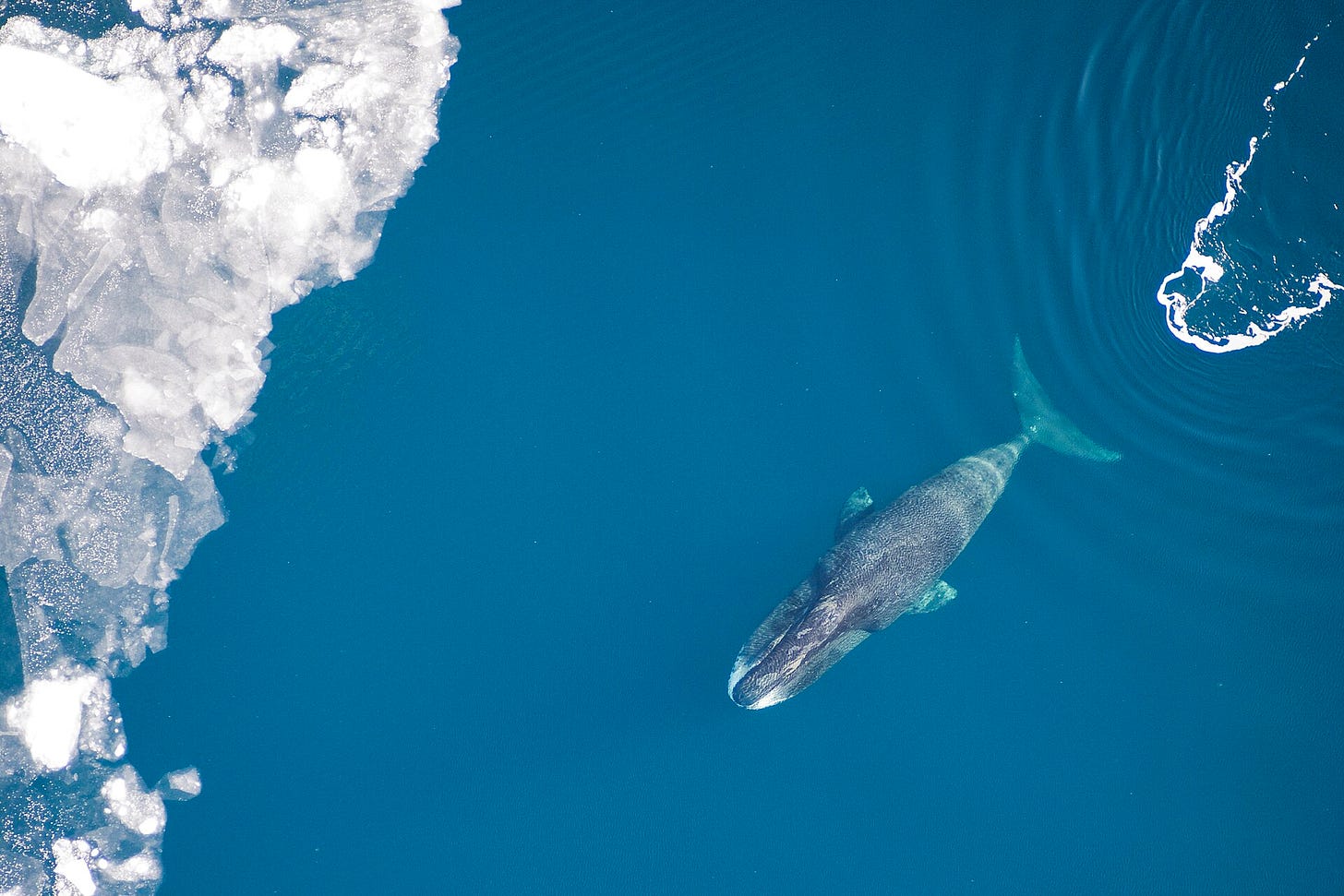
They live in the Arctic and thrive in one of the harshest environments on the planet, yet remain relatively mysterious to science.
3. Narwhals
Narwhals are like something out of a fantasy story.
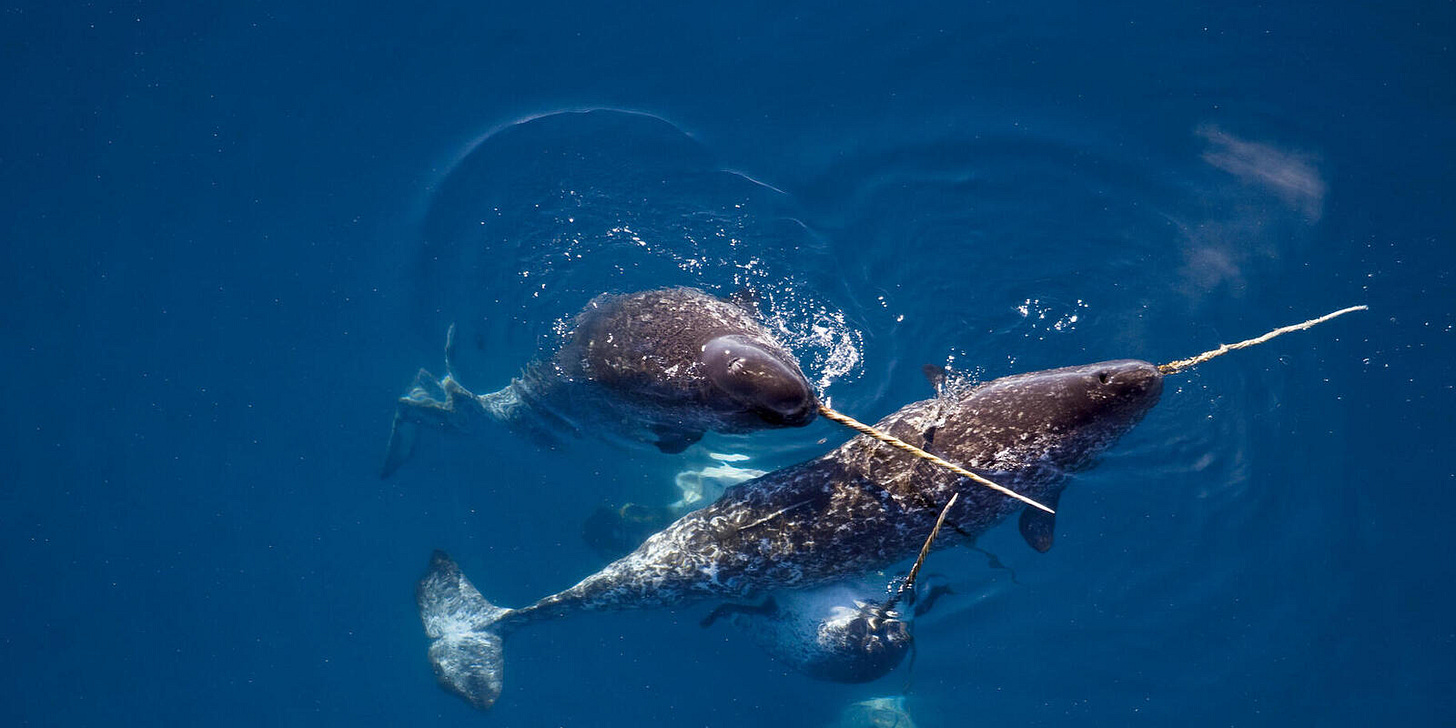
Often called the "unicorns of the sea," their long, spiral tusk is actually an enlarged tooth filled with nerves. Their biology is bizarre and beautiful, and they remain one of the most elusive whale species—we still don’t know everything about their behavior or full migration patterns and exact purpose of their tusks.
Their mystery adds to their magic, and they’re a perfect example of how much wonder still exists in the natural world.
You referred to Krill as the Unsung Superheroes of the Antarctic Sea. Why are they so important for the ecosystem? What’s the “Krill Paradox?”
Absolutely! Krill may be small, but their role in the marine ecosystem and their impact on the climate are truly profound.
Krill are a key food source for an extensive range of marine species in Antarctica (whales, seals, penguins and other seabirds). Krill aren’t just important for marine life—they also play a significant role in the global climate system, particularly through their relationship with the carbon cycle. Krill contribute to what’s known as the "biological carbon pump."

Phytoplankton take in carbon dioxide (CO2) from the atmosphere during photosynthesis. When krill consume phytoplankton, they take in this carbon. As krill dive deeper into the ocean to feed or when they die and sink, or their feces sink, much of the carbon they consumed is carried down into the deeper ocean layers, where it can be stored for hundreds to thousands of years.
This is a vital process in the global carbon cycle, as it helps sequester carbon away from the atmosphere and helps mitigate climate change to some degree. So if krill populations were to decrease significantly due to climate change, overfishing, or other factors, the efficiency of this carbon sequestration process could be reduced, potentially accelerating climate change.
The Krill Paradox revolves around the relationship between whales, krill, and phytoplankton, and it stems from the important role whales play in fertilizing the ocean. When whale populations were decimated due to industrial whaling in the 20th century, the Krill Paradox emerged.
Here's how it works: baleen whales, consume enormous amounts of krill in Antarctica, and in doing so, they also contribute to the ocean's nutrient cycling. Their feeding activities help to mix the ocean's layers, which facilitates the upwelling of nutrient-rich waters from deeper parts of the ocean. This process delivers essential nutrients—particularly iron—into the upper ocean layers, which is crucial for the growth of phytoplankton, the primary producers in the ocean. Phytoplankton is at the base of the marine food chain and is the primary food source for krill. When industrial whaling drastically reduced whale populations, there were fewer whales to provide this essential iron and other nutrients through their feeding and waste products. This led to a decline in phytoplankton productivity. With less phytoplankton available as food, krill populations also began to decrease, even though the absence of whales might have initially suggested an increase in krill numbers due to reduced predation pressure.
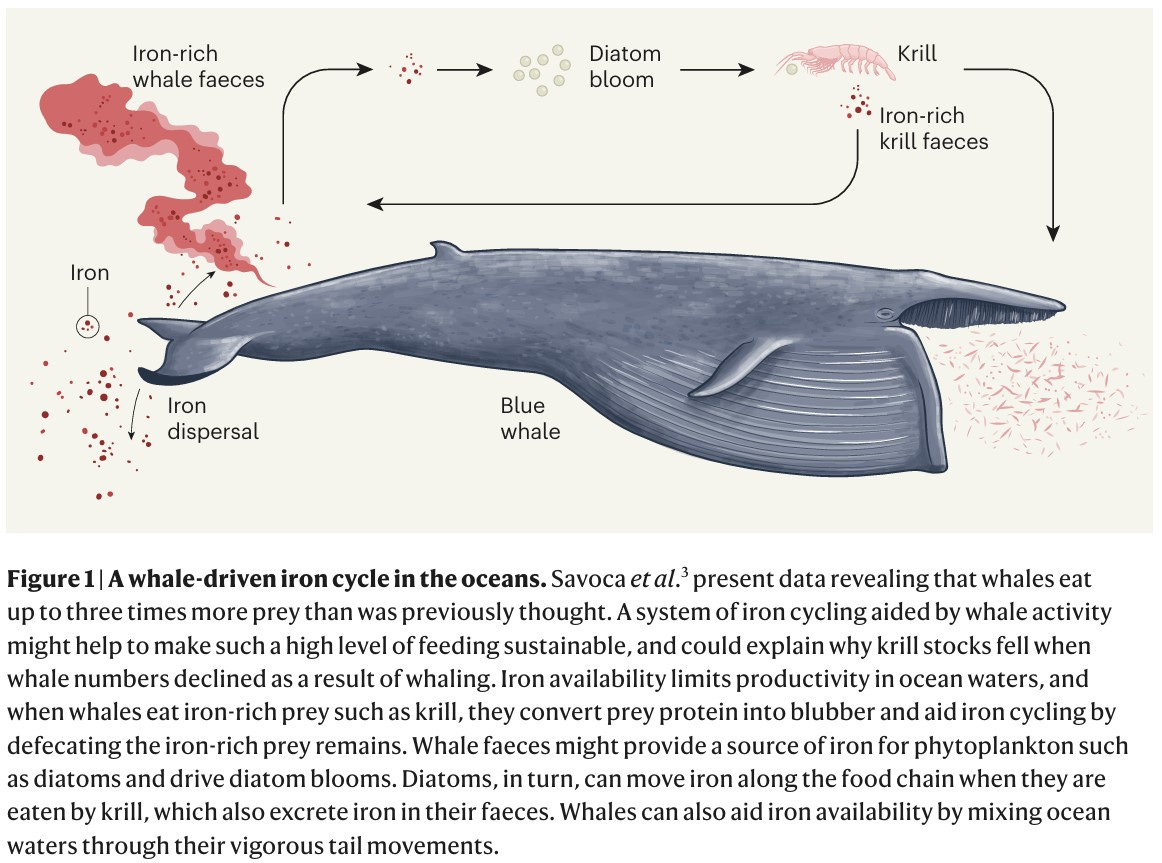
The paradox is that whales are directly responsible for sustaining krill populations—not just by eating them, but by playing a key role in the ocean's nutrient cycling. In essence, fewer whales mean less iron in the ocean, which means less phytoplankton, and in turn, fewer krill. This results in a cascading effect throughout the ecosystem.
So, the Krill Paradox is: The decline in whale populations → led to a reduction in the nutrients → that sustain the phytoplankton → that krill feed on, → which paradoxically caused krill populations to also decline, (even though there were fewer whales eating them).
This highlights just how interconnected the marine ecosystem is.
Whales, krill, and phytoplankton are all part of a delicate web, where the presence of whales is crucial not just for their direct food sources (krill) but also for supporting the broader ecological processes that sustain life in the Southern Ocean.
What’s the ocean’s role as a carbon sink? What idea should more people understand? Why?
The ocean plays a critical role in regulating the Earth's climate, particularly by acting as a carbon sink. This means that the ocean absorbs and stores large amounts of carbon dioxide (CO2) from the atmosphere, which helps to mitigate the effects of climate change.
The ocean absorbs carbon through two main processes:
The Physical Carbon Pump: When CO2 from the atmosphere dissolves in the ocean's surface waters, it forms carbonic acid, which is then converted into bicarbonate and carbonate ions. This process occurs more efficiently in colder waters, such as the polar regions. The absorbed CO2 is carried into the deeper layers of the ocean through ocean currents and upwelling. The deep ocean acts like a vast, long-term storage reservoir for CO2.
The biological carbon Pump: Phytoplankton, the tiny single celled algae that live near the ocean's surface, absorb CO2 during photosynthesis. They are the foundation of the marine food web. When they are consumed by marine animals (such as krill), some of the carbon in those phytoplankton is transferred to larger creatures and can be "pushed" deeper into the ocean when those organisms die or excrete waste.
This biological process helps move carbon from the atmosphere to the ocean depths, where it can be stored for decades, centuries, or even longer. This mechanism is essential for regulating atmospheric CO2 levels.
Why this is important: The ocean absorbs roughly 25% of human-made carbon emissions every year. Without this ability, atmospheric CO2 levels would be much higher, leading to faster global warming and more extreme climate events.
Essentially, the ocean acts as a natural buffer against the full force of climate change, buying humanity more time to reduce emissions and develop solutions.
However, there are challenges. As the ocean absorbs more CO2, it is becoming more acidic (a process called ocean acidification). This is harmful to marine life, especially organisms that rely on calcium carbonate to form shells and skeletons, like corals, shellfish, and some plankton. This not only affects biodiversity but also reduces the ocean’s ability to absorb further carbon, creating a vicious cycle.
Why more people should understand the ocean’s role as a carbon sink:
The Ocean Is Under-appreciated: Despite the ocean's huge role in climate regulation, it's often overlooked in discussions about climate change. People tend to focus more on terrestrial solutions like forest preservation or reducing fossil fuel use, which are important, but the ocean is just as critical. Understanding the ocean's role as a carbon sink helps us recognize the interconnectedness of Earth's systems and the importance of protecting marine ecosystems.
Climate Change and Ocean Health Are Interconnected: The health of the ocean is directly tied to the future of the climate. I mentioned that already, but as the ocean absorbs more CO2, it becomes more acidic, which impacts marine life. Additionally, if the ocean's carbon storage capacity is reduced (due to warming, acidification, or overfishing), it could accelerate climate change. Therefore, protecting the ocean and its ecosystems isn’t just about saving marine life—it’s about ensuring that the ocean can continue to act as a buffer against climate change
The Role of Marine Conservation: Understanding the ocean's role as a carbon sink also emphasizes the importance of marine conservation efforts. For example, protecting key ecosystems like mangroves, seagrasses, and salt marshes, which act as carbon sinks themselves, can help sequester carbon and preserve the ocean’s ability to store more. Marine protected areas (MPAs), sustainable fisheries management, and efforts to reduce pollution all play a role in maintaining the ocean’s carbon storage capacity.
The Urgency of Action: As the climate crisis deepens, it's increasingly important to think of the ocean not just as a place for recreation or resource extraction but as an integral part of the global climate system. More public awareness of how ocean health and climate are intertwined could foster greater support for policies that protect marine environments and reduce human impact on the ocean.
What are some climate/climate-tech-related ideas we can borrow from the ocean?
Great question! The ocean is a treasure trove of innovative ideas that could help us tackle climate change.
Over billions of years, marine creatures have evolved unique features and systems that we can borrow to design more sustainable technologies, improve energy efficiency, and even address climate challenges.
I can think of the following ones:
1. Humpback whale tubercles (inspiration for wind turbines)
So humpback whales have small, bumpy protrusions, or tubercles, along the leading edge of their pectoral fins.

These tubercles help the whales move through the water more efficiently by reducing drag and improving their maneuverability. Engineers have studied these tubercles to improve wind turbine blade designs. By mimicking the whale’s unique fins, wind turbines can be designed to operate more efficiently at lower wind speeds, with reduced drag and turbulence.

This could lead to more efficient and cost-effective wind energy generation, which is crucial for accelerating the global transition to renewable energy.
2. Shark skin (bio-inspired surface textures)
In fact, shark skin has a unique texture made up of microscopic, tooth-like scales called dermal denticles.
These scales reduce drag and help sharks glide smoothly through the water, making them more energy-efficient swimmers. By applying a similar texture to surfaces such as ships, airplanes, or pipelines, we can reduce friction and energy consumption. This principle has already been applied to improve the design of fuel-efficient vehicles and wind turbine blades.
Additionally, anti-fouling coatings based on shark skin have been proposed for ships and other marine structures, reducing the need for harmful chemical coatings that leach into the ocean.
3. Coral reefs (inspiration for coastal protection and carbon sequestration)
Coral reefs are highly efficient at capturing carbo and also act as natural barriers that protect coastlines from storm surges and erosion. The limestone structures of coral reefs are formed by the accumulation of calcium carbonate, which is derived from CO2.
Inspired by coral reef structures, we could design artificial reefs or floating barriers that act as coastal protection systems to combat rising sea levels and protect coastal infrastructure from extreme weather. Additionally, carbon-capture technologies could be enhanced by mimicking the process of calcification in corals, creating carbon-sequestering materials or methods for long-term CO2 storage.
4. Squid and octopus camouflage (adaptive materials for energy efficiency)
I’m obsessed with cephalopods in general!
Squid and octopuses have specialized cells in their skin, called chromatophores and iridophores, that allow them to change color and texture to blend with their environment. This dynamic ability helps them with camouflage, communication, and temperature regulation.
As far as I know, researchers are currently exploring adaptive materials inspired by these creatures to create smart building materials that can change color or texture depending on the temperature or light conditions. These materials could be used in energy-efficient buildings to help regulate temperature, reducing the need for air conditioning or heating. For example, windows or walls could adjust their properties to absorb less heat in summer or retain heat in winter, reducing energy consumption.
Through your lens as a marine biologist, researcher, and expedition team member, what are some impacts of climate change that you have personally observed? What would you like more people to be aware of?
In both the Arctic and Antarctic, glacier retreat and sea ice loss are accelerating.
I’ve observed firsthand how glaciers in Antarctica have been rapidly retreating, especially in places like the Antarctic Peninsula, where warm ocean currents have led to the collapse of ice shelves.
In the Arctic, sea ice is thinning and shrinking, and sea ice free periods become longer which affect many sea ice depend species, such as polar bears, walrus, belugas and narwhals.
I always try to explain the guests on our expeditions that sea ice is critical. As sea ice melts, it reduces habitat for these species and changes the structure of marine ecosystems.
The loss of ice also impacts the Albedo Effect—the ability of ice to reflect sunlight back into space. Less ice means more heat is absorbed by the ocean, accelerating global warming.

Looking back from a Net Zero future, what do you hope they will say about us?
Looking back from a Net Zero future, I hope people will say that we were courageous, innovative, and collectively responsible in the way we faced the climate change.
I hope they’ll reflect on how we recognized the interconnectedness of all life on Earth—understanding that the health of our oceans, forests, and ecosystems directly impacts our own survival.

🙏 Thanks, Anya for taking time and sharing your perspective.
I’d love to hear from you, please get in touch and tell me whom I should interview next or which topics you’d like to see covered ✌️



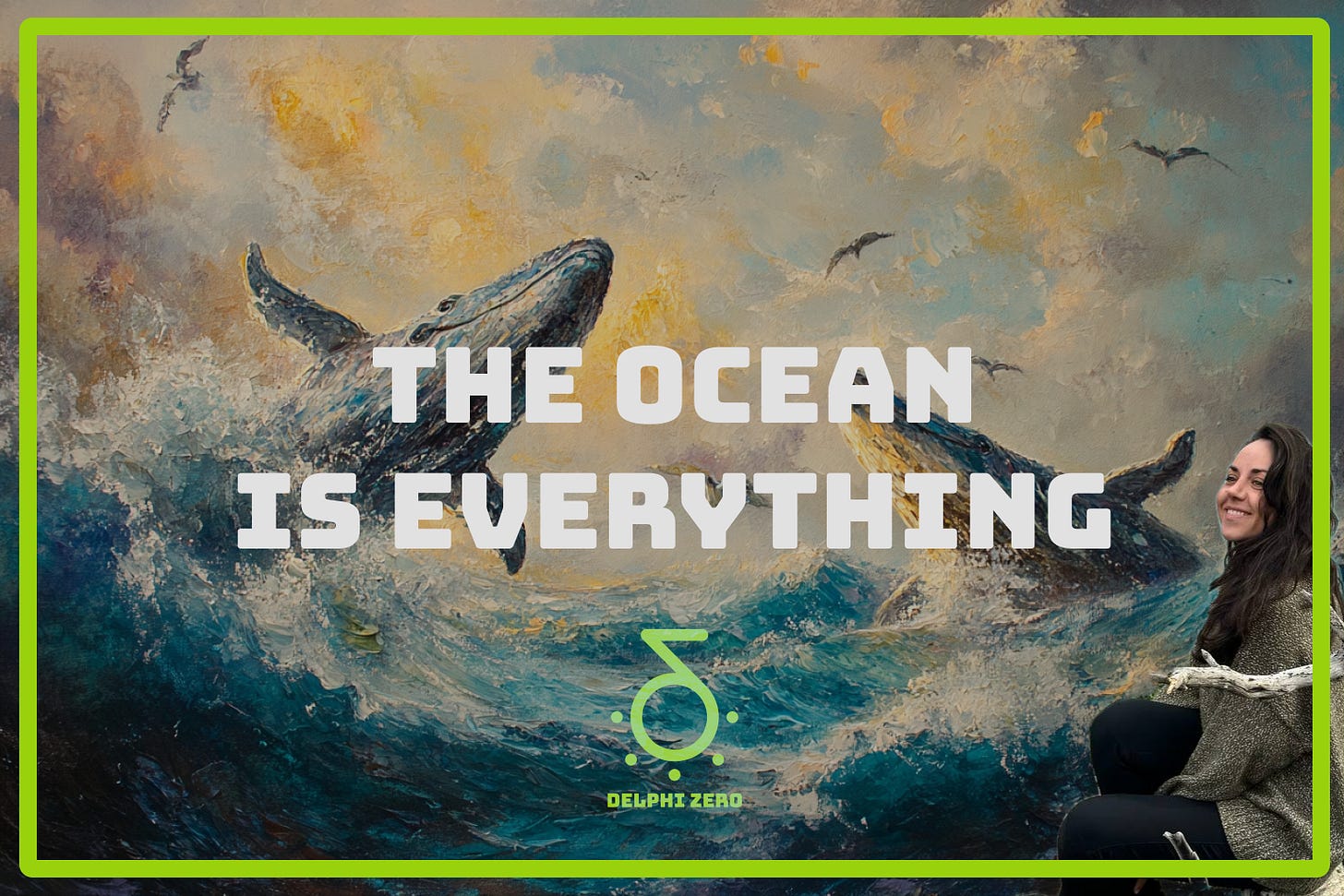



"It's like the ocean is quietly holding our mistakes, and we don't yet fully understand what it's costing." - very powerful and memorable!